7 Most Popular Handgun Cartridges: Pros and cons

In modern times, the shooting public has gravitated toward a handful of popular handgun calibers. The benefits of this are immense, with a greater variety of guns chambered for these as well as the economy of scale that comes with mass production. But all handgun calibers are a compromise, so today we are going to look at what is popular, and what compromises are being made.
The 9mm Luger is the most popular handgun cartridge. It is used widely by governments and citizens alike. The .22 Long Rifle, commonly abbreviated to “LR”, is the value king of cost per cartridge. But, there will be a few more common options for you to choose from at your local sporting goods store.
In this article, I intend to explain what I think are the top seven handgun calibers at the present. Also, why they should appeal to you, or why you should look at something else. As with many things, it depends on what you plan to do.
Note: For the duration of this article, I will use the terms Caliber and Cartridge interchangeably.
.22 Long Rifle: The King of Value

AKA: The .22 LR and simply the “twenty-two.”
The .22 Long Rifle, which is usually abbreviated to “LR”, is a small and efficient cartridge that has become popular because of its price and low recoil. It was developed in the late 19th-century as a more powerful alternative to the .22 Long, and it the most popular rimfire cartridge by a country mile.
Pros: The .22 LR easily beats every other cartridge in terms of cost per cartridge by a wide margin. It is not uncommon to buy a 500 round “brick” of ammunition for as little as $30. When I started shooting roughly 20 years ago, it was roughly half that price.
This is an incredible advantage to people on a budget.
Because this cartridge is very small compared to most others, it also carries with it the advantages of little recoil and a mild report. Many people’s first experience shooting a gun as a child will be with the .22 LR. It is an excellent choice when teaching the very basics because it allows a shooter to focus on fundamentals and not controlling recoil.
And while I don’t recommend shooting .22 LR out of a handgun without hearing protection, a very minimal amount is necessary to bring noise levels down to a normal person’s comfort zone.
Cons: The .22 LR lacks power. It shoots a very small bullet that won’t penetrate and expand like a centerfire caliber. It also doesn’t teach shooters to compensate for the recoil that a centerfire cartridge will produce in a handgun.
In the inevitable gun and ammunition panics that occur every few years, the .22 LR will typically disappear off shelves first and return close to last. The value advantage it possesses makes it extra attractive to those who do not prepare for shortages.
Applications: The most common use for the .22 LR is low-cost target shooting. There are also competitive sports dedicated to the use of this cartridge. The .22 LR can be ethically used to hunt small animals.
I do not recommend the use of .22 LR for self-defense, but fully acknowledge the is it lethal at the same time.
9mm Luger: One Size Fits Most
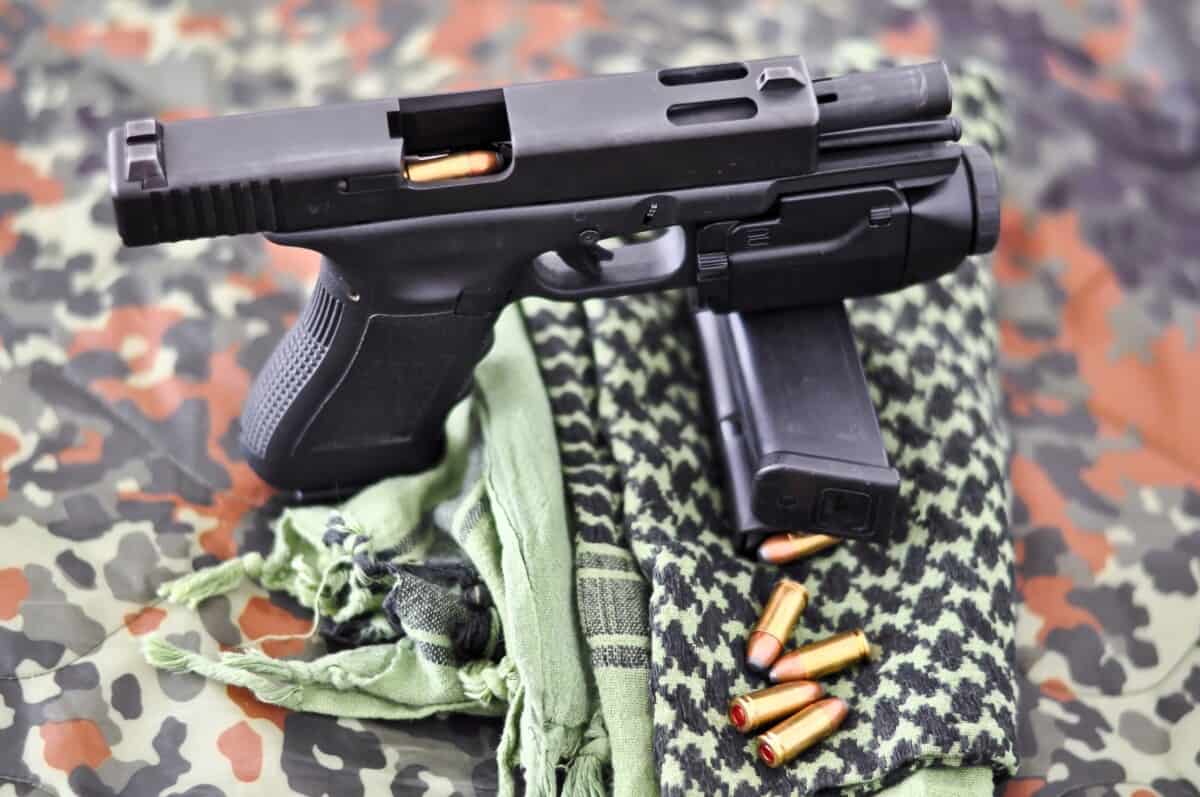
AKA: The 9x19mm, 9mm NATO, and 9mm Parabellum.
The 9mm Luger was developed at the turn of the 20th Century. Based on the .30 Luger, the case was necked up to accept the larger .355 bullet. The cartridge case has a mild taper toward the front, which makes it a very forgiving round when feeding from a magazine.
The 9mm Luger comes in standard pressure, +P, and unofficial +P+ variant. The P stands for pressure, and the goal of +P and +P+ ammunition is to deliver a higher muzzle velocity. It is uncommon to see +P and +P+ ammunition in 9mm Luger that is not intended for self-defense.
Pros: The 9mm Luger offers the best value of all the centerfire pistol cartridges. Even when it uses more raw materials than other calibers, it is aided by the economy of scale and will still cost less.
It is also an excellent choice for newer shooters because it is one of the lowest recoil cartridges which is commonly chambered in full-sized pistols.
And even though it is considered low-recoil compared to other options, it is still excellent in a self-defense role. Self-defense ammunition in 9mm Luger is easily the most common and offers the greatest variety of choices.
Capacity is another advantage of 9mm Luger, with most full-sized pistols holding between 15 to 19 cartridges in a magazine, compact pistols holding between 10 to 15 cartridges, and sub-compact pistols holding between 6 to 10 cartridges.
Because of the capacity and controllability in smaller handguns, the 9mm Luger is incredibly popular for concealed carry.
Cons: Just like the .22 LR, the 9mm Luger is a victim of its own success during panic buying. During these panics, 9mm Luger ammunition can increase in price several times over.
While the 9mm Luger has had some highly publicized failings in self-defense shootings, modern ammunition has made the 9mm Luger more effective than it was in the 1980s and 1990s. Still, some prefer to use a more powerful cartridge for self-defense.
I am not advocating this myself, but it is a common enough viewpoint where I feel obliged to mention it.
Applications: The 9mm Luger is used in almost every application. Target shooting, competition, government-issue, home defense, and concealed carry are some of the more popular examples.
.40 S&W: The Middle Child
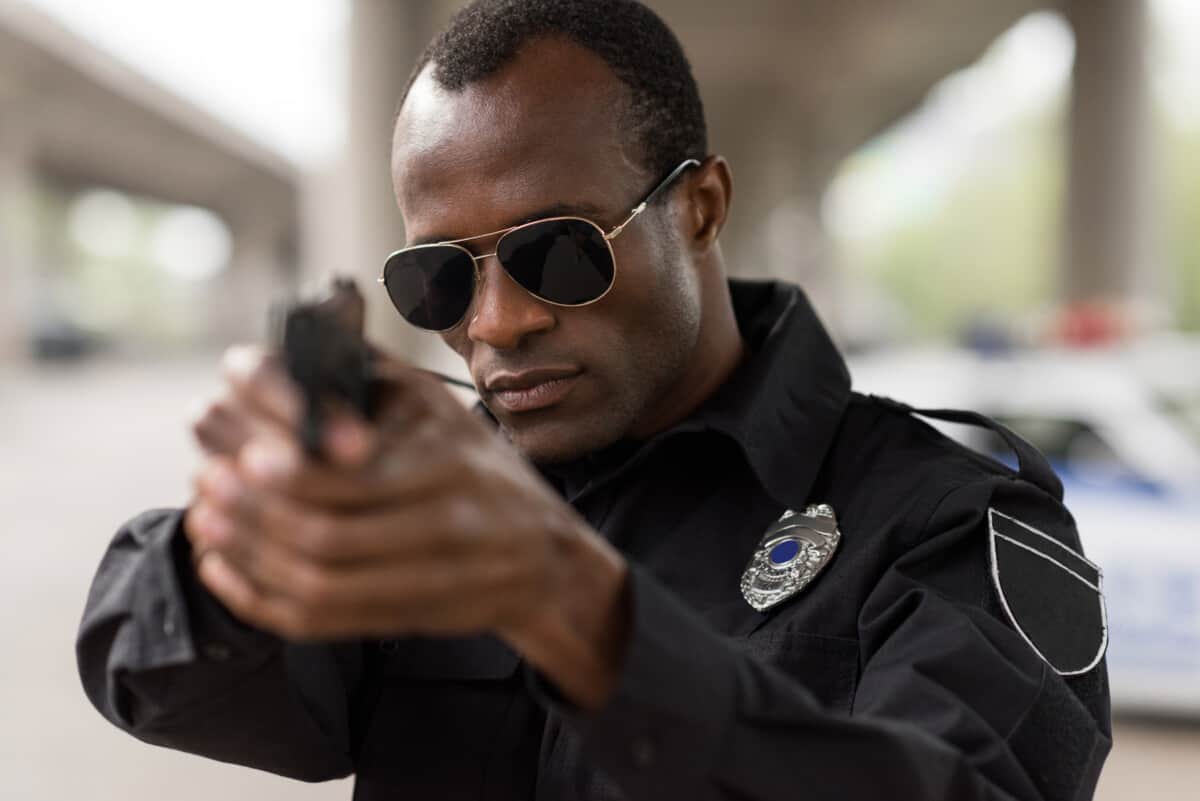
AKA: The .40 Short & Weak
The .40 Smith & Wesson was developed in the early 1990s and skyrocketed to fame almost immediately. It developed out of an effort to shorting the 10mm Auto and fit it into a 9mm Luger framed pistol. It quickly became a favorite for law enforcement agencies.
At a time when the 9mm Luger was viewed as not powerful enough for law enforcement uses, the .40 S&W rose to popularity. It also attracted widespread acceptance by the shooting public but never garnered much attention from militaries.
It is often viewed as the big brother to the 9mm Luger, and the little brother to both the 10mm Auto and the .45 ACP.
Pros: The .40 S&W carries a small to moderate power advantage over the 9mm Luger, without producing excessive recoil in full-sized pistols. It is generally viewed as a cartridge that a hobby-level shooter can control effectively without constant practice.
Full-sized pistols chambered in 40 S&W high capacity, typically carrying 2 to 3 cartridges less than a 9mm Luger pistol of the same size.
The most common pistols, such as the Glock and Smith & Wesson variants, can be easily converted from 40 S&W to 9mm Luger with a replacement barrel and 9mm Luger magazines. If you are interested in this option, check that a conversion barrel is available before your gun purchase.
The same can not be done vice-versa.
Also, in ammunition panics, the 40 S&W can be oddly available when other calibers are not.
Cons: The biggest negative associated with the 40 S&W is that it will produce a considerable amount of “snap” when shot, especially compared to 9mm Luger practice ammunition. In a full-sized pistol, this is still very controllable. However, in a compact and sub-compact pistol, it can become a problem for less experienced shooters.
Ammunition prices are higher than the 9mm Luger, but not by much. While a better value than most other cartridges, if money is tight the 9mm Luger is generally the better choice.
Pistols chambered in 40 S&W also tend to be a little less forgiving when it comes to feeding ammunition from the magazine. It is not uncommon for a completely functional gun to not like one or two types of ammunition.
Applications: The .40 S&W shares most of the same applications with the 9mm Luger.
.45 ACP: Big and Slow
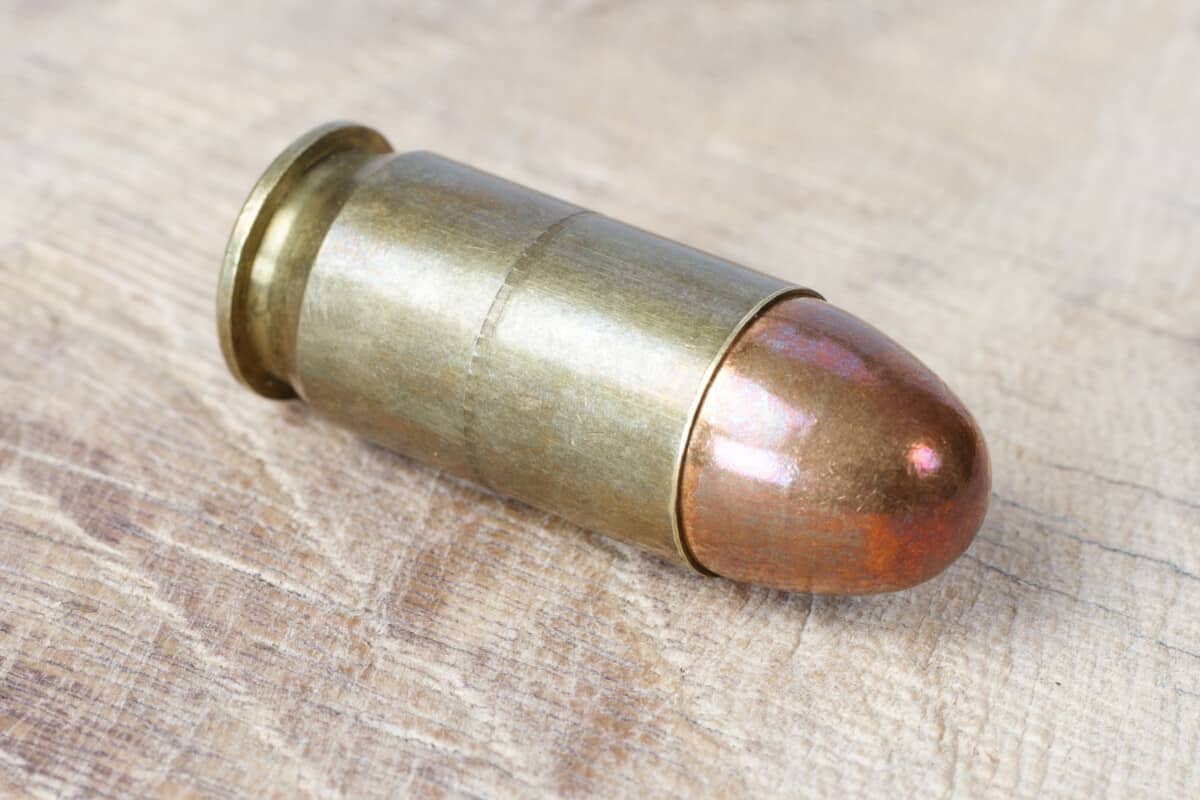
AKA: The .45 Auto
The .45 Automatic Colt Pistol, or ACP for short, was developed at the start of the 20th century by John Moses Browning. It was adopted by the U.S. Army as the standard chambering for the iconic M1911 service pistol. The cartridge also saw expanded use in submachine guns.
It became very popular at the expense of market share for .38 caliber revolvers.
Pros: Many people like the idea of shooting a larger diameter bullet in a self-defense situation and the 45 ACP certainly does that with only moderate recoil.
It is a common saying that “a 9mm may expand but a .45 can’t shrink.”
Modern defensive ammunition for the .45 ACP can expand to impressive sizes, well beyond what 9mm Luger and .40 S&W bullets are capable of.
There is also a common sentiment that the .45 ACP has less felt recoil than a .40 S&W. While both recoil more than a 9mm Luger, the .45 ACP feels more like a push, while the 40 S&W feels like a snap.
Cons: The biggest downside of the .45 ACP is ammunition price. Because of the substantial amounts of raw materials that go into every single cartridge, this is understandable. The .45 ACP does still benefit price-wise from being very popular.
It is better to own a pistol that you can afford to shoot over a pistol that you cannot, regardless of effectiveness.
Because of ammunition cost, many .45 ACP shooters take up reloading to help offset this disadvantage.
Another drawback is most .45 ACP pistols are lower capacity, and the ones that are not tend to have very large grips. For people with small to medium-sized hands, it is advisable to hold a high-capacity .45 ACP pistol before making a purchasing decision.
Applications: Target shooting and self-defense are the primary uses for the .45 ACP. The governments of the world have largely moved to more efficient options.
.38 Special: Medium and Slow
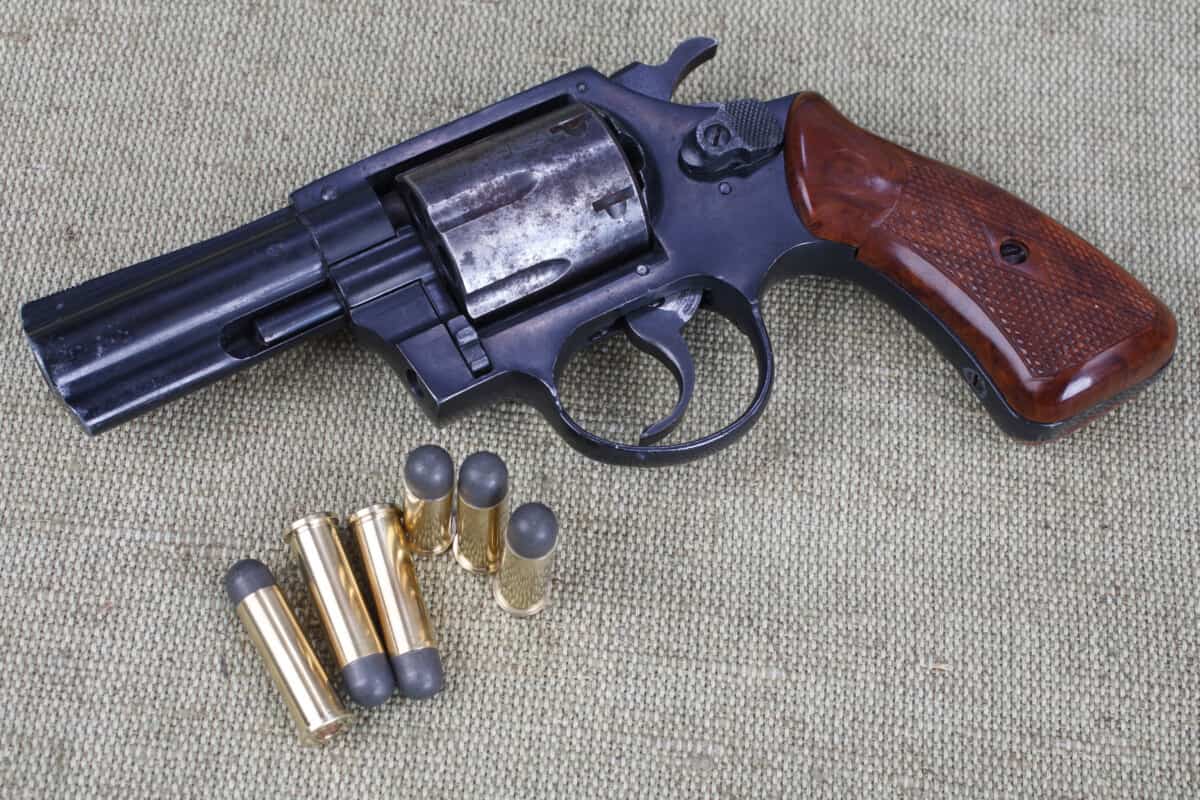
AKA: The .38 Smith & Wesson Special and the .38 Spl
The .38 Special is an old cartridge, developed at the end of the 19th century as a more powerful option to the .38 Long Colt. A bit of deception is present in its name though, as the .38 Special shoots a .357 bullet and not a .38 one.
It is capable of being loaded with both black and smokeless powder and is a very long cartridge as a result. However, being a revolver cartridge, having a long overall length is less important and it doesn’t affect the size of the grip.
Pros: I don’t want to be a Debbie-Downer when it comes to the .38 Special, but there are very few upsides to this cartridge at the present time. The one notable upside is using it as a low-recoil alternative to .357 Magnum ammunition in a .357 Magnum revolver.
Beyond use in .357 Magnum revolvers, nostalgia is the primary driving force behind the .38 Special in modern times.
Cons: With modern defensive ammunition, the .38 Special is inferior to the 9mm Luger even in its most capable loadings.
Most .38 Special ammunition suffers from a purposeful downgrade in power because of how many vintage pistols exist for the caliber. The same can be said about published reloading data.
And because the .38 Special is used in revolvers, the size to ammunition capacity compared to modern semi-automatics is terrible.
Applications: Target practice, cowboy action shooting, and self-defense with an emphasis on concealed carry are the most common applications.
.357 Magnum: Medium and Fast
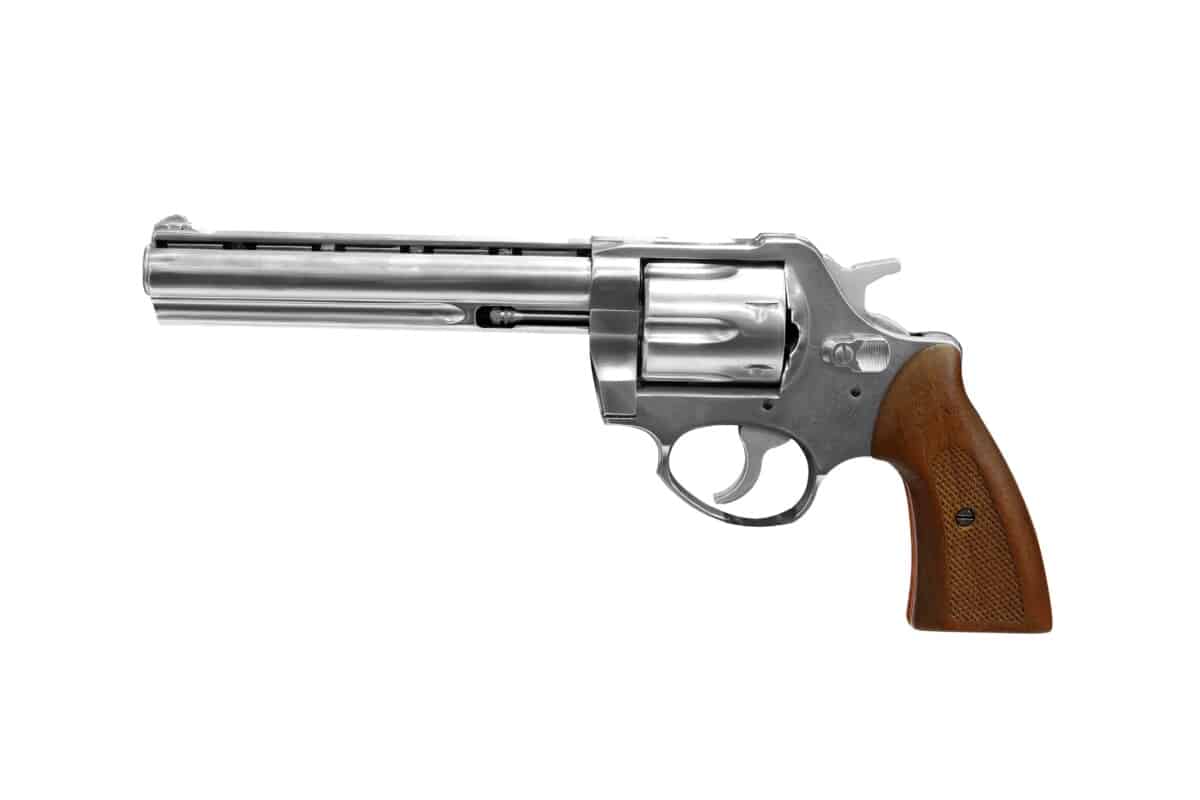
AKA: The .357 Smith & Wesson Magnum and the .357 Mag
The .357 Magnum is derived from the .38 Special, with 1/10th of an inch added to the length of the case. This keeps .357 Magnum ammunition from being shot in a .38 Special revolver.
This was done in the 1930s and was largely an effort of the famous enthusiast Elmer Keith. One of the benefits of just lengthening the case is it made the .38 Special ammunition compatible with .357 Magnum guns.
Most people who own a .357 Magnum revolver shoot more .38 Special loads out of it than .357 Magnum.
Pros: The .357 Magnum is vastly more powerful than the .38 Special. It is fully capable of being pushed into a self-defense role and can even be a bit over-powered when used as such. It is also an acceptable choice for defense against dangerous North American game.
For hunting, it has been used to kill a variety of large game but is primarily used for deer in modern times. An excellent advantage of the .357 Magnum is it also chambered in some lever-action rifles.
Cons: The .357 Magnum ammunition can have uncomfortable recoil in smaller-framed revolvers. When chambered in lightweight snub-nose revolvers, full-powered loads can be painful to shoot. Many small and medium frame revolvers will be destroyed with the constant use of .357 Magnum ammunition.
Reduced power self-defense loads exist for the express purpose of being shot in these guns, but finding target ammunition is at the same power levels is less common.
Target ammunition also tends to be significantly more pricey than other common pistol calibers.
Some expanding ammunition is meant strictly for hunting and won’t reliably expand after passing through heavy clothing, which is possible (if not likely) in a self-defense situation.
Applications: Self-defense with the possibility of being used to protect one’s self from dangerous animals, hunting and target practice.
.380 ACP: A Little Bullet for a Little Gun
AKA: The 9x17mm, 9mm Short, and .380 Auto.
The .380 ACP was designed by John Moses Browning at the start of the 20th Century. It has primarily been used in “pocket guns” over the years. Many .380 ACP guns are incredibly small in size, while medium-size pistols are not commonly chambered for the cartridge.
For blowback-operated pistols, the .380 ACP is about as “powerful” of a cartridge that can be used without adding excessive weight to the slide of the pistol.
And while this cartridge masquerades as a .38 caliber offering, in actuality it shoots a .355 bullet like the 9mm Luger.
Pro: In very small pistols, recoil can range from uncomfortable to painful when shooting more powerful cartridges. This is greatly reduced by reducing the chambering to .380 ACP.
Some shooters with a physical disability will find that the .380 ACP in a larger-sized gun (for the caliber) is comfortable to shoot while the 9mm Luger is not.
Pro or Con? You Decide: Is the .380 ACP underpowered? Well, compared to the 9mm Luger it certainly is. Compared to the .22 LR, or the .32 ACP, it is not. My opinion is that unless special circumstances exist, the 9mm Luger should be the preferred cartridge compared to the .380 ACP except in the smallest of pistols.
Cons: In addition to lacking power when compared to the 9mm Luger, the ammunition is also more expensive and not commonly sold in bulk.
Many of the pistols chambered in .380 ACP are small to a degree that they are poor choices for newer or irregular shooters. They are simply too small to be used for the purpose of learning basic shooting fundamentals.
Applications: Concealed carry for those unwilling to carry a larger gun and regular use for people with a disability that affects the arms or hands.
